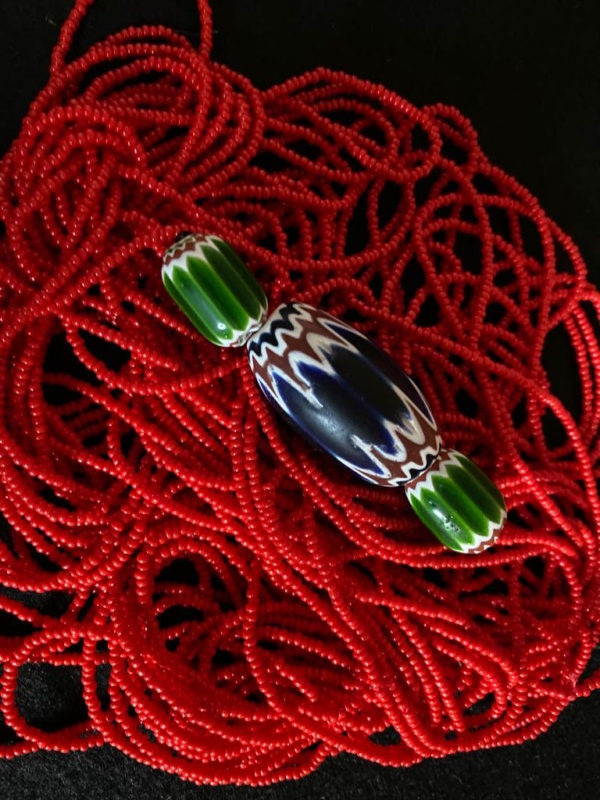
Glass beads, a lesser known product of Venice and Murano, yet a very important one, now universally acknowledged. Since December 2020 UNESCO has recognized a new entry in the List of the Intangible Cultural Heritage of Humanity: ‘The Art of Glass Beads’. The smallest, wearable glass objects have finally obtained a proper recognition within the multifaceted planet of glass.
Glass and Innovation
Venetians did not invent glass. They innovated it. In 1291, a cluster of islets detached from the central nucleus of the city, were made into a glassmaking district by decree: Murano. Since then, shared know-hows and production processes, secret recipes and a very high competition among the many glassmakers confined within that relatively territory have made history: since the 15th century the purest of glass is still being produced in Murano.
Venetians were not even the first ones to make glass beads. The production of glass beads is traced back in 1500 BC in Egypt, Syria, Mesopotamia, and then in Phoenicia, India, and in later centuries also in Antiochia, Rome, Byzantium. Yet, the glass beads manufactured in Venice were for centuries the most sought after products in Europe, the Mediterranean and beyond.
Travelling glass beads
Between the end of the 15th and the beginning of the 20th centuries tons of glass beads of any size and colors travelled from Venice to Portugal, the Netherlands, England, and from there to West Africa and the Americas. As wearable jewels, but also and especially as instruments of barter and trade, glass beads were highly praised. They gained fame and glory among both African tribes and the Natives of America. Glass is perfect to emulate nature and those materials that had been previously used to create jewels and ornaments: wood, rocks, stones, seeds, rare and expensive minerals like agate and rock crystal. Glass went beyond nature: its colors, its translucency and transparency looked magical to people.
Glass beads were produced in Venice in countless variations and sizes. There is evidence that in 1764 twenty-two Murano Glass factories were able to produce 19 tons of glass beads a week, mostly for export. Massive exports of glass beads to the United States are documented during the decade 1880-1890: about 2700 tons per year. Simply amazing,
Murano, and all the stories behind it, its glass factories, the bead people: they are a precious, living heritage you can still witness, experience, treasure, and listen to during a tour with Venice with A Guide.
 EN
EN IT
IT FR
FR DE
DE ES
ES RU
RU JP
JP Venicewithaguide.com
Venicewithaguide.com 